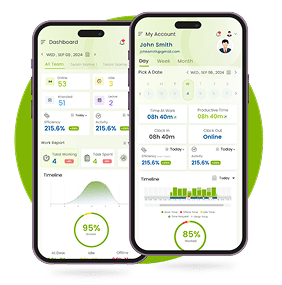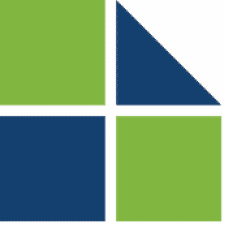In 2026, the race for organizational success no longer depends on clocking hours, it depends on optimizing human potential. Modern companies realize that employee efficiency isn’t about pushing employees harder; it’s about designing smarter systems, guided by data, empathy, and wellbeing.
As hybrid and flexible workplaces dominate, efficiency must now be defined by engagement, focus, and meaningful contribution. For HR leaders and managers, this year demands an approach that blends strategy, analytics, and wellness initiatives to sustain performance without exhaustion.
The key? Understanding the metrics that truly drive workforce productivity and leveraging tools like Desklog to make these insights measurable, visible, and actionable.
Rethinking Productivity in 2026: The New Rules of Efficiency
Why Traditional Metrics Fail Modern Teams
Counting work hours or office presence no longer reflects real performance. What defines success today is quality of work, creative problem-solving, and sustainable focus. Old measures like attendance sheets fail to capture these dimensions, especially in hybrid setups spanning time zones and diverse mental rhythms.
Embracing Smart & Ethical Performance Tracking
Efficiency in 2026 is about sustained focus, goal alignment, and intelligent effort distribution. With performance insights and automatic time tracking, HR leaders can now identify patterns of engagement and attention. Desklog’s analytics dashboards help visualize these patterns, transforming abstract time data into actionable insight while maintaining trust and transparency.
When analytics reveal declining focus hours, HR can act early, adjusting workloads, encouraging mindful breaks, or addressing burnout before it impacts results.
Building Trust Through Transparent Metrics
Trust remains the foundation of high performance. Employees must know why data is collected. Desklog’s ethical design prioritizes outcomes over surveillance, ensuring that performance visibility uplifts rather than pressures employees.
Workload Optimization and Balanced Scheduling: The Core of Workforce Productivity
Recognizing the Connection Between Load and Efficiency
Unequal workload distribution can drain productivity. Some employees face overload; others remain disengaged. This imbalance erodes team harmony and affects the rate of employee efficiency.
Through real-time dashboards, HR leaders can monitor task allocation to identify imbalance early. Desklog’s visualized workload analytics reveal who’s overburdened or underutilized, helping HR redesign workflows before fatigue sets in.
Designing Balanced Workflows with Clarity
Balanced scheduling provides calm and structure. Employees perform best when their workloads are fair and aligned with their capacity. Desklog integrates project time tracking, subtask management, and team time management tools to ensure every task contributes meaningfully to broader business goals.
Using features like clock in & clock out, offline tracking, and idle time tracking, HR teams can visualize both productivity and rest intervals, creating a system that respects energy cycles while maintaining accountability.
Desklog’s Role in Optimizing Fair Work Distribution
Desklog’s automated timesheet system allows managers to balance workloads dynamically and identify underperformance trends without micromanagement. This data-driven fairness ensures everyone contributes at their best pace, without exhaustion.
For a deeper understanding, HR can also explore insights from Desklog’s remote employee management tools, helping them maintain alignment and transparency across hybrid teams.
Empowering Autonomy with Accountability and Wellbeing
Shifting from Control to Empowerment
High-performing teams thrive on trust. Autonomy helps employees make decisions and manage energy effectively. Desklog’s performance dashboards and employee accountability systems make this possible by giving every individual real-time access to their own data. Instead of being monitored, they’re empowered to self-correct, balance workloads, and sustain focus, all while promoting employee engagement and satisfaction.
Accountability Without Micromanagement
Accountability thrives on trust, not control. When employees are given clear goals and the freedom to achieve them, they perform with greater focus and confidence. Micromanagement, on the other hand, limits creativity and lowers morale. Modern managers must shift from supervision to support, providing clarity, feedback, and transparency instead of constant oversight. This approach builds ownership, strengthens engagement, and turns accountability into a shared value rather than a forced responsibility.
Cultivating Ownership and Work-Life Balance
Ownership grows when employees can visualize their contributions. Desklog’s employee wellness and work-life balance features, including customizable break reminders and break & overtime notification, help individuals protect their energy and remain productive sustainably.
This human-centered structure creates autonomy, engagement, and wellness, pillars of true employee efficiency.
Continuous Improvement Through Data-Driven Wellbeing Insights
In 2026, HR no longer waits for burnout to appear. Predictive data helps them act early.
Predictive Analytics for Human-Centered Management
Desklog’s reports highlight engagement dips and focus declines, giving managers time to intervene compassionately.
Analytics-driven foresight, such as those found in remote employee management insights, helps HR design restorative interventions, recovery days, adjusted workloads, or coaching sessions that maintain equilibrium.
Integrating Wellbeing with Performance
Employee efficiency without wellbeing is short-lived. Desklog’s Employee Wellness Module helps teams sustain energy, focus, and emotional balance through structured breaks, wellness prompts, and mindful work intervals. It encourages employees to recharge without guilt and enables managers to design healthier schedules based on real-time wellbeing insights.
By integrating wellness directly into daily workflows, organizations can achieve lasting efficiency, built on balance, not burnout.
From Data to Care: Ethical Monitoring for Sustainable Growth
Desklog’s purpose is not to control but to care. Its privacy-conscious design delivers patterns, not personal scrutiny. When employees know data exists to support, not monitor, their performance, loyalty and trust flourish.
Through continuous visibility, HR leaders can also address key challenges like employee absenteeism in the workplace, employee burnout, and workplace distractions before they escalate.
Managing Projects and Profitability Through Smarter Time Insights
The Role of Time Tracking in Business Success
The role of time tracking in 2026 goes beyond compliance, it drives growth. It connects individual performance to broader profitability and ensures that project goals remain aligned with wellbeing.
Desklog supports this through project billing & invoice, project profit & loss, and automated cost insights that help managers detect project cost overruns early.
To explore how precise time tracking impacts ROI, visit the Impact of Project Time Tracking on Project Profitability & ROI blog.
Optimizing Cost and Efficiency in Projects
When projects are tracked transparently, employees understand how their time contributes to value creation. Desklog’s tools help differentiate between billable and non-billable hours, aligning with insights from the Billable vs Non-Billable blog.
By integrating these insights, HR teams can maximize employee performance while sustaining morale and wellbeing.
Smart Scheduling & Shift Management: Aligning Energy with Outcomes
The Foundation of a Healthy Work Rhythm
Work rhythms matter. Desklog’s Employee Shift Management Software helps HR design schedules that reflect individual energy cycles and life balance, minimizing overtime stress.
Employees benefit from clarity on priorities and protected downtime, reducing fatigue and improving employee satisfaction.
Managing Attendance & Time for Remote Teams
Modern HR faces the challenge of how to manage remote employee attendance. Desklog’s attendance management and smart shift scheduling simplify this by providing real-time visibility into attendance and work hours.
HR can balance workloads and ensure fairness without constant supervision, maintaining both productivity and wellbeing across distributed teams.
The HR Efficiency & Wellness Framework 2026
| Step | Goal | HR Strategy | Desklog’s Role |
|---|---|---|---|
| Measure What Matters | Identify performance & wellbeing drivers | Track focus, engagement & energy | Performance Insights with productivity dashboards |
| Optimize Work Design | Align workload and personal capacity | Balanced task and Time mapping | Workload analytics & project time tracking |
| Empower Through Visibility | Foster autonomy & accountability | Transparent data and dashboards | Individual insights, kanban view |
| Evolve Continuously | Sustain growth & prevent burnout | Predictive analytics & wellbeing tracking | Automated reports, employee-wellness monitoring |
This cycle ensures HR leaders make informed, compassionate decisions while employees gain balance, ownership, and clarity. The result is a self-sustaining culture where efficiency grows alongside wellness.
Conclusion: The Future of Employee Efficiency is Human
Employee efficiency in 2026 isn’t about speed, it’s about sustainability. It’s about creating systems that support mental clarity, emotional balance, and continuous improvement.
By integrating Desklog’s analytics, time management insights, and wellbeing features, organizations gain the power to measure employee productivity, reduce burnout, and maintain harmony between output and energy.
As explored in future employee productivity trends, the next evolution of productivity is deeply human. The future belongs to companies that blend analytics with empathy and efficiency with care.
Build a culture where performance and wellbeing move together!
Explore Desklog’s analytics-driven workforce and wellness solutions today.
FAQs
1 How does Desklog help manage attendance for remote teams?
Desklog’s attendance management software automates clock-in and clock-out tracking for distributed teams. It records work hours, leaves, and shifts in real time, giving HR a unified view of attendance without manual input or follow-ups.
2 Can Desklog handle flexible or hybrid work schedules?
Yes. With shift scheduling, HR can easily define flexible, rotating, or custom shifts to accommodate global teams. It ensures balanced coverage, visibility, and fairness, whether employees work remotely or on-site.
3 How does Desklog ensure fairness without micromanagement?
Desklog promotes transparency, not surveillance. Its real-time dashboards show attendance, active hours, and productivity insights, allowing HR to assess work patterns objectively while employees retain full autonomy over their schedules.
4 Can Desklog track offline work hours too?
Yes. Desklog’s Offline-Time-Tracking ensures accurate time logs even when employees face connectivity issues. Once they reconnect, data syncs automatically, maintaining consistency and accountability without penalizing remote users.
5 How does Desklog prevent burnout while tracking attendance?
Desklog’s Employee Wellness Module integrates with attendance insights to highlight overwork patterns, extended hours, or missed breaks. HR can use these analytics to encourage balanced schedules and protect employee wellbeing.
6 How can HR monitor shift compliance and attendance accuracy?
Desklog’s shift dashboards provide a live overview of who’s present, late, or on break. With automated alerts and detailed logs, HR can easily verify attendance accuracy and prevent issues like absenteeism or missed shifts.
7 Can Desklog integrate attendance with performance analytics?
Absolutely. Desklog connects attendance, project time tracking, and productivity metrics, helping HR correlate presence with performance. This allows managers to measure employee efficiency based on output, not just login hours.
8 What makes Desklog ideal for remote attendance management?
Desklog combines automation, transparency, and employee-centric design. From Clock In & Clock Out tracking to wellness insights and shift planning, it creates a balanced system where accountability and flexibility coexist effortlessly.

















